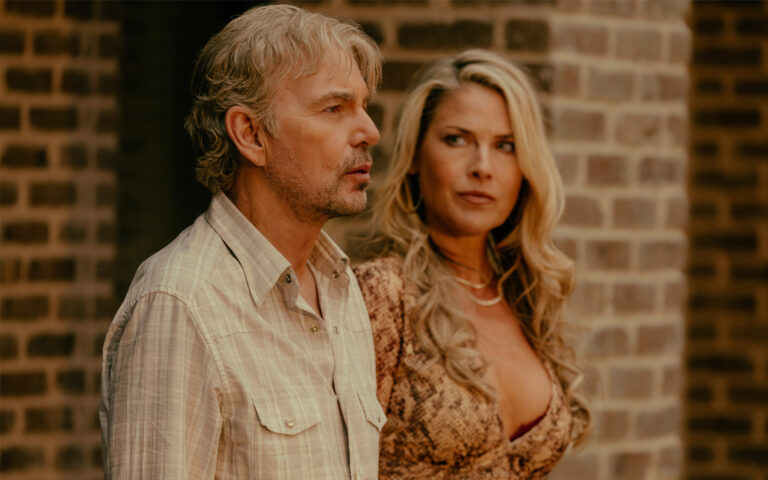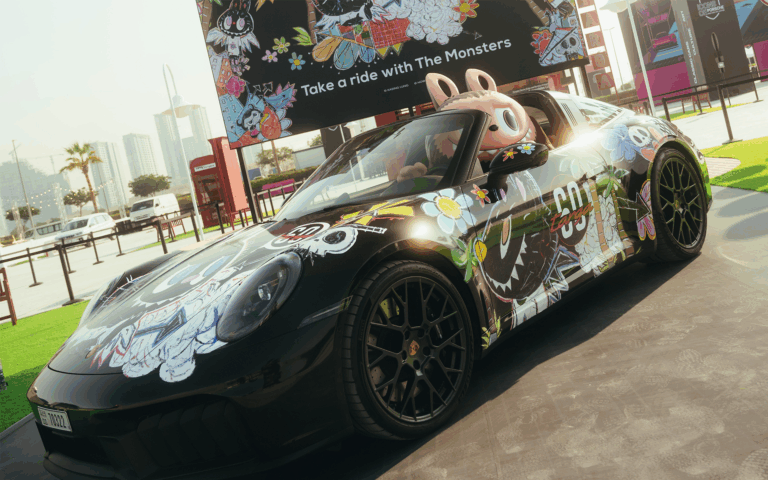The sun is setting over New York City, its orange glow bouncing off the glass towers of the Financial District and twinkling across the surface of the East River. It’s hard to imagine a better place to spend a summer evening in the city than this rooftop bar, with its views of the Brooklyn Bridge and the Manhattan skyline beyond. It’s a rare place where one can get a bit of peace from the frenzied hustle of New York below. But for Cory Richards, who makes a living visiting places where few people have ever set foot, serenity is relative. We might as well be in the middle of Times Square.
Richards, a 38-year-old professional photographer, filmmaker, explorer, and mountaineer, recently returned from the Himalayas, where he attempted to scale Mount Everest. It was a notoriously difficult climbing season on the mountain, with inclement weather causing a massive traffic jam at the summit, contributing to the deaths of 11 climbers. Richards wasn’t in that lineup, however. He was tackling the peak from the far more technically challenging Tibetan side, ascending without the help of supplemental oxygen. After 10 months of planning, Richards and his climbing partner set out from base camp for the summit and spent 40 hours ascending 5,000 feet of rock and snow before turning back. The weather had turned, and continuing on was no longer possible. It was a decisive defeat.
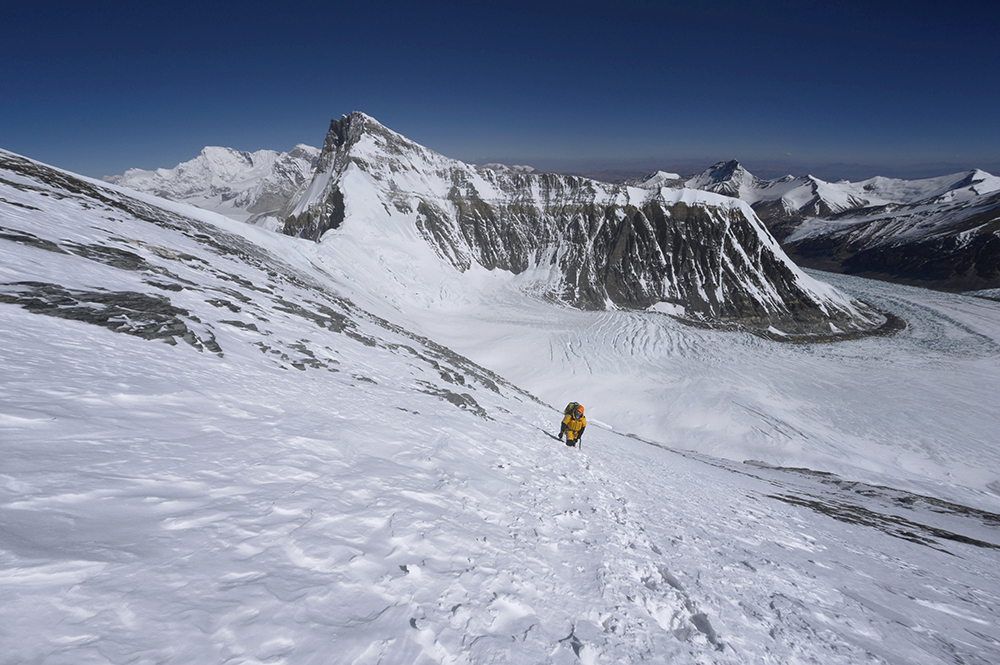
A few weeks later and several worlds away, Richards now stands on the roof of an upscale hotel in Brooklyn while the sun sets over the city. He’s flown in at the invitation of the Swiss watchmaker Vacheron Constantin, who partnered with him on the climb, to talk about his time on Everest and the remarkable journey that brought him there. Of all his tales of hiking overland through jungles, hacking through crocodile-infested swamps, and tackling Himalayan peaks, his own life story is one of the more remarkable ones he’s got.
Cory Richards grew up in the mountains of Utah. His parents met while working at a ski resort and raised their two boys spending winters on the slopes and summers hiking and camping in the Rockies. Despite this picturesque upbringing, Richards was an unhappy kid. By the end of his teens, he’d been diagnosed with depression and bipolar disorder, dropped out of school, and been kicked out of his parents’ house. “If you look at the way my adolescence unfolded, it calls into question everything that you can do right to raise a child,” he says. “You can have the most idyllic situation and it doesn’t mean that you’re going to have the most idyllic experience. It’s almost like people with the most abundance are oftentimes the most lost.”
After a stint in a juvenile psychiatric ward and several failed attempts at getting his life back together, it was the mountains, Richards says, that saved him. “I was reaching out in all these directions to find a place that felt secure and like home,” he says. “The mountains don’t demand an identity, so you go into the mountains and that becomes your identity.”
Richards had always been a creative kid, and a talented artist who spent his free time making traditional American jewellery and drawing. With his mom’s point-and-shoot film camera in hand, he started spending more time in the mountains, taking pictures of the places that meant so much to him. “It was climbing and photography that got me out of it, because it gave me purpose,” he says. “If you look at all people that end up in bad situations, it usually stems from a lack of purpose and a lack of identity. Without community, without purpose, without identity, we tend to have no value in ourselves. It’s those things that gave me some sense of belonging.”
“I was reaching out in all these directions to find a place that felt secure and like home. The mountains don’t demand an identity — they become one.”
By his late twenties, Richards was making a name for himself as a talented climber and photographer, a reputation that earned him assignments from prominent mountaineering magazines and a sponsorship deal with The North Face. In 2011, he received an offer he couldn’t refuse: an invitation to join a winter expedition to the summit of Gasherbrum II, an imposing 8,000-metre Himalayan peak on the border of Pakistan. The team would face brutal cold, vicious storms, and the constant threat of avalanches, but if successful they would become the first to summit the peak in winter. Richards signed on to document the climb.
The most famous photo Cory Richards has ever taken was shot shortly after his team reached the summit and began their descent. It is a self-portrait, Richards’s face burned by wind and snow, caked with ice, streaked with tears, and contorted into a grimace of pain. “It was disbelief, fear, misunderstanding, confusion,” he says of what was going through his mind moments after a massive avalanche tore down the mountainside, burying the climbers in seconds. Miraculously, no one was killed, and immediately after digging out of the snow, Richards turned the camera on himself. It was a moment that would change his life: the photo itself made Richards a celebrity, but the effect the avalanche had on his psyche would nearly destroy him.
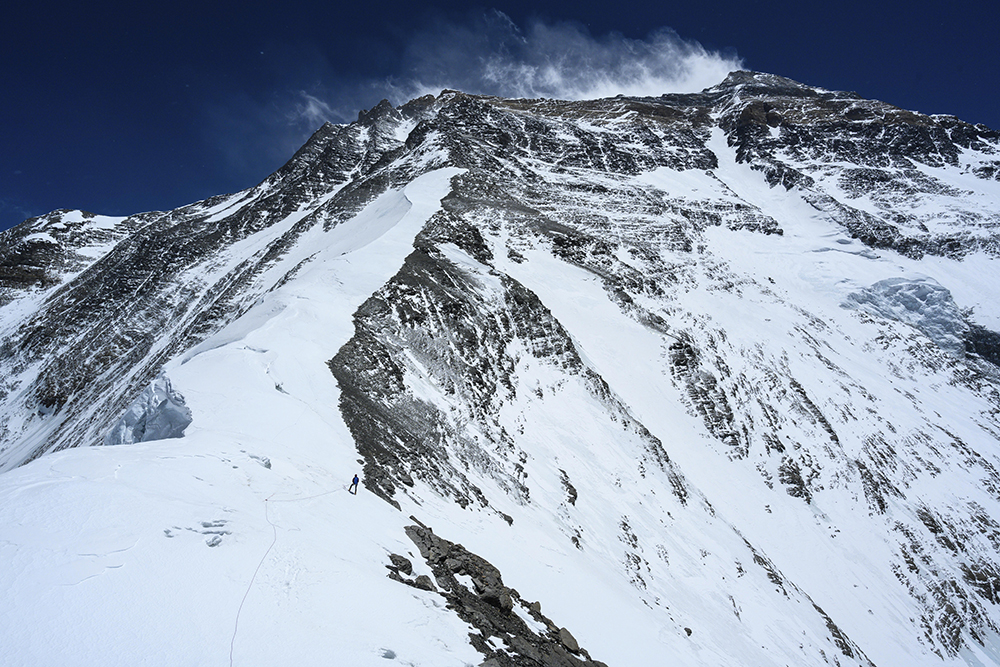
“The biggest misunderstanding about PTSD is that it’s somehow reserved for combat,” Richards says, describing the depression, anxiety, and confusion that began to take over his life following his brush with death in the Himalayas. “The reality is that our brains are pretty fragile things. It can happen from bombs and combat, it can happen from a car accident, or it can happen from an avalanche, and the form of it is identical. Once that event has manifested in your life all bets are off.” After he almost died on the side of Gasherbrum II, Richards’s career continued to accelerate, but his mental health was unravelling with alarming speed.
As Cold — a documentary of Richards’s footage from the expedition — began to pick up awards on the festival circuit, Richards went along on tour, watching the film dozens of times and speaking to audiences about his near-death experience. Then his self-portrait was chosen for the cover of National Geographic’s 125th anniversary issue. Invitations to explore ancient caves in Nepal, trek through jungles in Myanmar, and chart a river in the Angolan highlands for the iconic magazine followed, as did more opportunities to tell the story of his survival in the Himalayas. The problem was that with each retelling, Richards was forced to relive the most terrifying moment of his life, and with each viewing of the footage his psyche was pushed one step closer to a breaking point. “What I didn’t understand at the time is there’s a trauma resolution that needs to take place in the brain, and I hadn’t done that work,” he says. “I got married, but I felt dissociated. I was despondent. I couldn’t connect with anyone or anything around me. The only thing that kept driving me forward was my work and my career.”
Looking for a way to reconcile the torment of a mind stuck somewhere between life and death, Richards’s struggles with drugs and alcohol returned in full force. In the self-destructive spiral that followed, his relationships and career fell apart. He lost his house, his marriage, his production company, and his sponsorship deal. He contemplated suicide. After ascending to the roof of the world, he was now in a free-fall toward rock bottom.
Over the years that followed the onset of PTSD, through a combination of hard work, medical treatment, and luck, Richards began to reassemble his life. He went to therapy, and undertook eye movement desensitization and reprocessing (EMDR), a new kind of treatment for PTSD. He quit drinking and rededicated himself to the work he loved. In 2018, seven years after almost dying on the face of a mountain, he was approached by Vacheron Constantin and offered the opportunity to collaborate on an expedition to Everest.
“We were looking for someone incarnating a unique spirit of exploration and travel, and who would bring a unique angle to this important value for the maison,” says Vacheron Constantin chief marketing officer Laurent Perves, who approached Richards to collaborate on a campaign dubbed “One of Not Many.” Lacking mainstream celebrity appeal and bringing more than his share of baggage, Richards makes an unusual choice to represent a luxury brand, but his unique combination of tenacity, complexity, and raw humanity were just what the company was looking for. “When we found out about Cory and then met him, we discovered his genuine, authentic, and definitely ‘human’ eye, but more importantly, we met a man with a complex history, with doubts, with a certain fragility,” Perves says. “It’s his constant ability to assess and challenge his own weaknesses, with the aim to reach new heights and do better, that inspired us.”
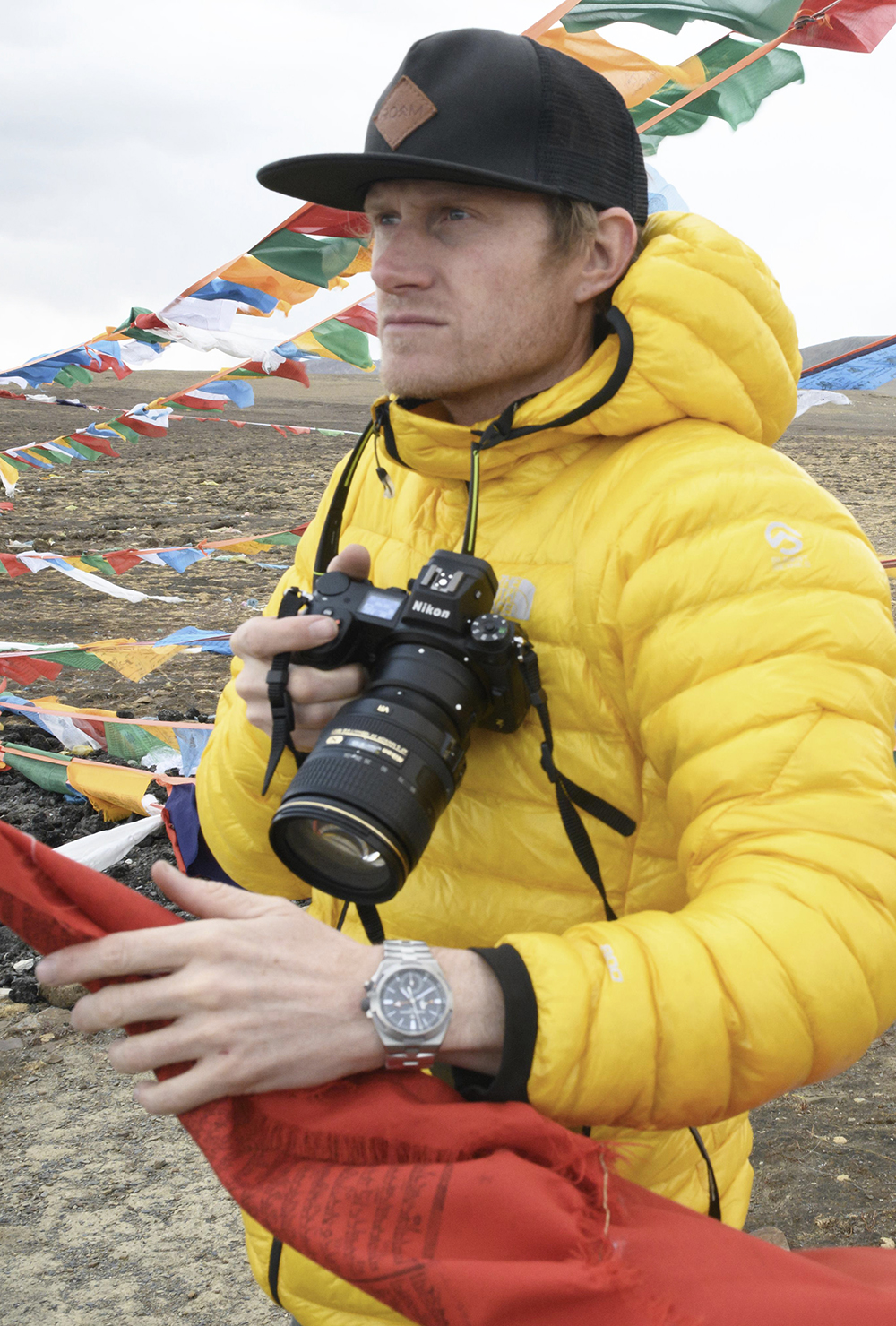
Following his aborted attempt at summiting Everest this past spring, Richards will soon begin training for his next try at the summit in partnership with Vacheron Constantin, proposed for spring 2020. He has climbed the mountain before, but that by no means diminishes the appeal of such expeditions. The opportunity to combine photography, climbing, and reportage, he says, provides a vital way to express himself. “It gives me an opportunity to talk about the things that are really important to me…the people behind these adventures, the places, politics, the world that we live in as a human family,” he says. “I’ve covered everything from climate change to geopolitics, paleontology, archeology — but I don’t want to be a specialist. I want to experience all things. I want to evolve.”
Richards makes no secret of the fact that his evolution is ongoing. He still suffers from depression, anxiety, and the lingering effects of PTSD. He’s still nervous speaking in front of an audience, and opens his presentations by admitting so. His hard childhood and adolescence and his struggles on and off the mountain might, however, also work to his advantage. “Seeing what I saw in those years was illuminating,” he says. “But the truth is it didn’t prepare me to be tough. I think what it did was it gave me a genuine sense of curiosity and a more open and compassionate sense about the world around me, and that prepared me to tell stories that can potentially move the dial.” Then, he adds, lest he sound too much like any of this is part of a plan, “I hope so, anyway. I’m young. I’m still figuring it out.”
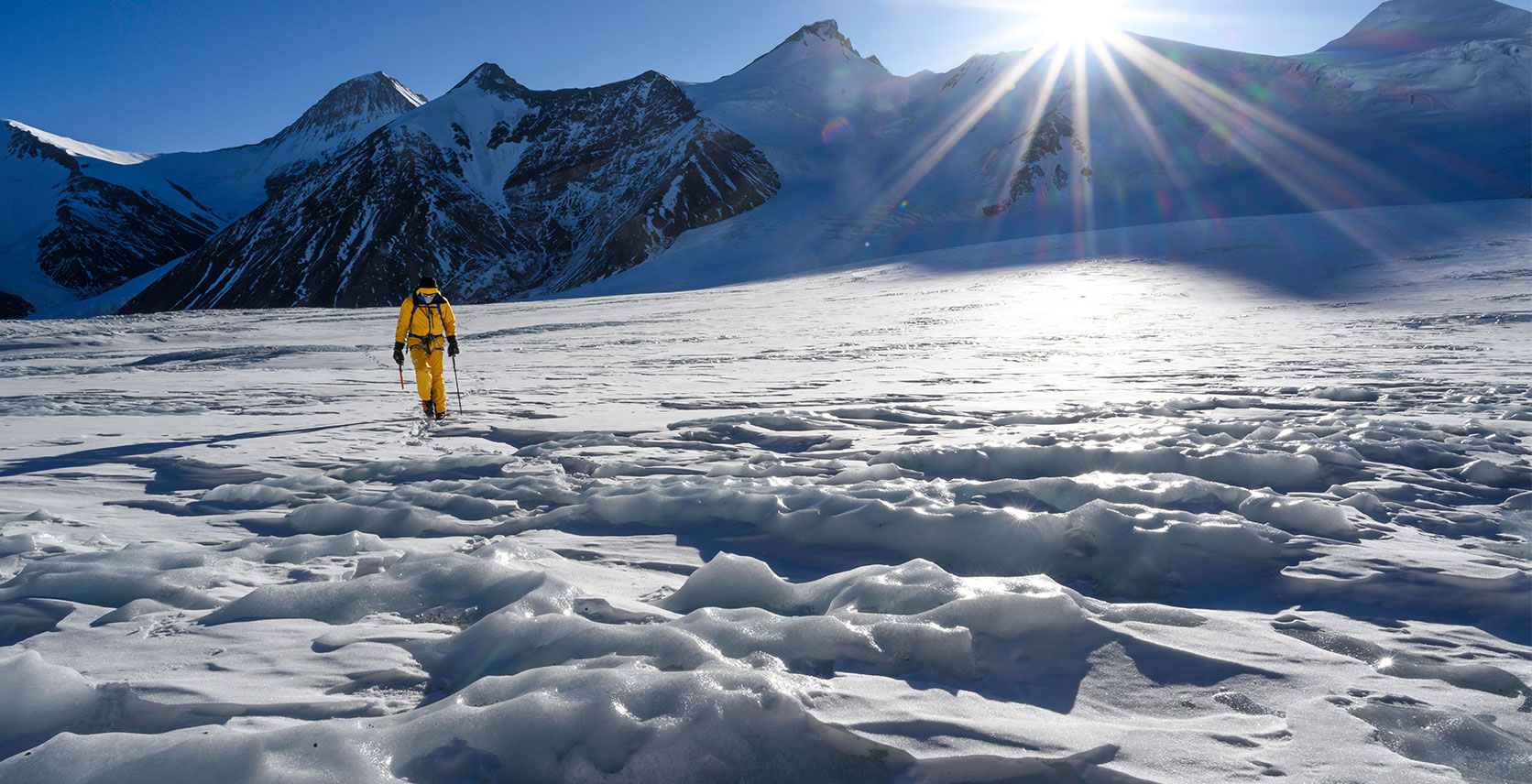
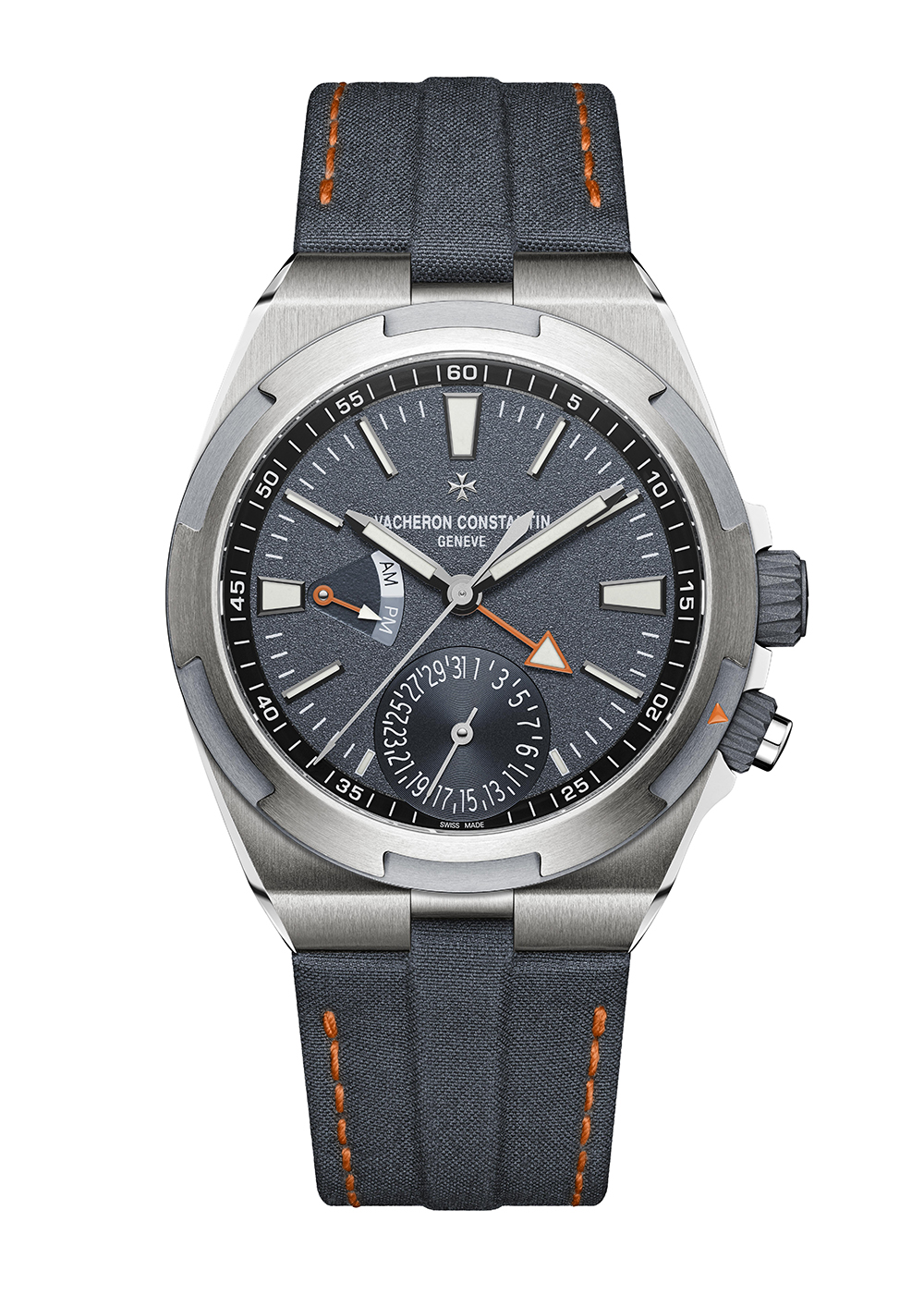 In his attempt to summit Everest in collaboration with Vacheron Constantin, Cory Richards wore a specially made Overseas dual time prototype, which he helped to design. To measure up to the harsh conditions of the mountain, the watch features a titanium case, a tantalum reinforcement, and a sturdy Ventile strap. Visible through the sapphire case back is an oscillating weight engraved with Richards’s photo of the mountain.
In his attempt to summit Everest in collaboration with Vacheron Constantin, Cory Richards wore a specially made Overseas dual time prototype, which he helped to design. To measure up to the harsh conditions of the mountain, the watch features a titanium case, a tantalum reinforcement, and a sturdy Ventile strap. Visible through the sapphire case back is an oscillating weight engraved with Richards’s photo of the mountain.